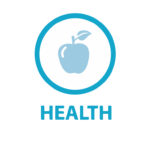
Oral health
Age 6-12 (School Age)
Note
*: Statistically unstable
HHSA Regions: Health and Human Services Agency regions
Data not available:
Race-Ethnicity, for American Indian or Alaska Native, and Native Hawaiian or other Pacific Islander; Asian in 2015-2017; Black in 2015-2017 and 2021-2023
Race-Ethnicity categories:
Latino, While (non-latino), Black or African American (non-latino), Asian (non-latino), Multi-Race: Two or More Races (non-latino)
Source:
California Health Interview Survey (Download date: 12/6/2023, 2/3/2025)
Indicator criteria: Children Under Age 12 -Never been to dentist, More than 1 year up to 2 years ago, More than 2 years up to 5 years ago, More than 5 years ago
What is the indicator?
This indicator – the percentage of children under age 12 who had not visited a dentist in more than one year or ever – represents the proportion of children who did not have the recommended annual visit during the most important years to prevent and treat dental disease and decay. National recommendations from dentists and pediatricians call for children to start dental care at age 12 months and make at least annual visits. These data are routinely reported in the California Health Interview Survey (CHIS).
Why is this important?
Oral health is essential to good health overall. Dental caries (the disease that causes cavities and tooth decay) is the most common chronic disease of childhood. Untreated cavities cause pain and affect school achievement, sleep, and nutrition. While preventable, tooth decay is on the rise among children. Nationally, about 9% of children ages 2-5, 15% of children 6-11, and 13% of adolescents ages 12–19 have untreated cavities. This disproportionality affects children from low-income families, children of color, and/or children with special health care needs.
What strategies can make a difference?
These evidence-based strategies are used across the country to improve child oral health:
- Implement health promotion initiatives aimed at boosting awareness about the importance of early dental care practices like brushing and flossing, along with advocating for regular dental check-ups for both children and adults.
- Expand access and availability of dental services in low-income and underserved communities through initiatives such as community clinic dental services and mobile dental clinics.
- Ensure accessibility to preventive dental treatments like sealants and fluoride varnish by integrating them into dental practices, primary care services, and school-based health programs.
- Foster and conduct oral health evaluations and screenings across various settings including home visiting, childcare facilities, Head Start programs, WIC centers, elementary schools, expanded learning programs, and other community settings.
- Ensure community water fluoridation.